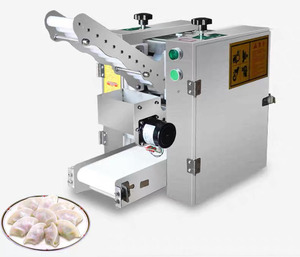(41346 products available)


































































































































































































































 Ready to Ship
Ready to Ship













The empanada china machine has several variations to meet the diverse needs of food businesses. Some of these machines are automatic.
Manual empanada machines
These models make empanadas by hand. Users flatten the dough in the machine and insert filling and then fold/press the dough to create the empanada. They don't need electricity, but they need the user to put in more work than automatic models to make empanadas. Smaller businesses may consider this type.
Mini empanada machines
Mini empanada machines create smaller empanadas suited for appetizers or snack items instead of full meals. They could be practical for firms that aim to provide a selection of items or want to create bite-sized variations of traditional empanadas.
Automatic empanada machines
Automatic empanada machines streamline the empanada-making process, allowing for higher production rates and less manual effort than automatic and semi-automatic models. Users must provide the dough and filling, and then the machine will shape and seal the empanadas. They are ideal for businesses that require high-volume production and efficiency.
Electric empanada machines
Electric empanada machines use electricity to automate the empanada-making process. They often have adjustable settings for dough thickness, filling amount, and sealing pressure, providing flexibility and consistency in production. Electric models are appropriate for busy kitchens that need to produce large quantities of empanadas quickly.
Commercial empanada machines
Commercial empanada machines are designed for food service establishments such as restaurants, cafes, and catering companies. These machines offer high production capacity, durability, and features suitable for commercial use. They are built to withstand the demands of commercial environments and provide efficient and consistent empanada production.
As mentioned earlier, the empanada china machines are used by food businesses to make empanadas. These food businesses include the following:
They are also used by small-scale food businesses that may be located in rural areas where manual labor is found at a higher cost. These include:
Another great use of these machines is by home cooks who like to host gatherings and parties. They are great for appetizers and make a great variety for guests. A home-use machine will be small in size and in most cases, be made out of plastic so the average person can handle it.
The following tips will help business buyers to choose the right industrial Chinese empanada machines for their specific needs:
Assessment of production needs:
Business buyers should first evaluate their production needs. They should consider variables like the daily production volume, which helps to find a machine that can meet specific output requirements. Consider the variety of empanadas, as different types may require different machines. Also, take into account the preferred production method, whether it is mass production, automated assembly, or small-scale, simple operations.
Space and layout considerations:
Buyers should evaluate the available space and layout. Determine the suitable dimensions and weight to ensure a good fit within the production area. Consider the mobility and flexibility, so it is easy to move to different locations if necessary. Additionally, check the installation requirements and ensure the machine has a straightforward assembly process with minimal technical support.
Equipment compatibility:
Ensure that the empanada machine is compatible with existing food production equipment. Assess any special installation requirements to avoid incurring additional costs later. Also, consider the maintenance and cleaning requirements. The machine's design should enable a quick and effective cleaning and maintenance process to reduce downtime and maintain product quality.
Quality and durability:
Choose an empanada machine with robust durability-tested construction. Buyers should get quality assurance and reliable after-sales support to address any equipment issues quickly. Consider the long-term maintenance costs of the machine, as regular maintenance and repairs can add to production expenses.
Q: What is an empanada machine called?
A: It is called an empanada maker.
Q: How many empanadas can an industrial empanada machine make per hour?
A: For example, the industrial automatic empanada machine model 3540 can produce 3,540 pieces per hour. This machine has a feeding hopper and mold that are parameterized to make empanadas in high volumes for commercial establishments.
Q: Can an automatic Chinese dumpling machine make different types of dumplings?
A: Yes, some automatic dumpling machines can make various types of dumplings, like Chinese pan-fried pork dumpling machines, foreign wontons, and custard wonton dumple patterns. Manufacturers customize them to produce different types of dumplings with distinct shapes and sizes.
Q: Can an empanada machine work with any type of dough?
A: Not all machines can work with any type of dough. Some machines require specific types of dough to work correctly. Using the proper dough will ensure that the empanadas are pelotitas correctly and cooked evenly.
Q: Can he automated the production process of empanadas at different scales?
A: Yes, the automation machines used in empanada production differ at scales. Small-scale empanada makers are ideal for domestic use or small businesses, while large-scale automatic empanada makers are suitable for commercial and industrial use. The large-scale automatic empanada makers can produce empanadas at a higher rate.